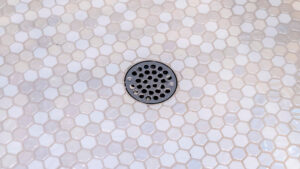The spring-loaded pressure relief valve is an essential component in various industrial systems. These valves play a crucial role in maintaining system safety and efficiency by controlling pressure within a set range. Understanding how these valves work and their importance can significantly impact the safety and reliability of industrial operations.

What is a Spring-Loaded Pressure Relief Valve?
A spring-loaded pressure relief valve is a type of safety valve used to control or limit the pressure in a system. When the pressure exceeds a predetermined limit, the valve opens, allowing excess fluid to escape, thus preventing potential damage or failure of the system. The valve automatically closes once the pressure returns to a safe level, thanks to the spring mechanism.
How Does a Spring-Loaded Pressure Relief Valve Work?
The operation of a spring-loaded pressure relief valve is based on the balance between the force of the spring and the system pressure. The spring is pre-set to a specific pressure. When the system pressure exceeds this set point, the force exerted by the fluid overcomes the spring force, causing the valve to open. This action allows the excess pressure to be released, protecting the system from overpressure situations.
Key Components of a Spring-Loaded Pressure Relief Valve
- Valve Body: The main casing that houses all the valve components.
- Spring: The critical component that determines the pressure setting of the valve.
- Disc: Seals the valve when closed and lifts to release pressure.
- Adjusting Screw: Used to set the desired pressure limit.
Applications of Spring-Loaded Pressure Relief Valves
These valves are widely used across various industries. Some common applications include:
- Oil and Gas: Protects pipelines and processing equipment from overpressure.
- Chemical Plants: Ensures safety in chemical reaction processes.
- Power Generation: Safeguards boilers and turbines from excessive pressure.
- Water Systems: Maintains pressure in municipal and industrial water supply systems.
Benefits of Using Spring-Loaded Pressure Relief Valves
The use of spring-loaded pressure relief valves offers several benefits, including:
- Enhanced Safety: Prevents system failures and accidents due to overpressure.
- Cost-Effective: Reduces maintenance costs by preventing equipment damage.
- Reliability: Offers consistent performance in varying conditions.
Selection Criteria for Spring-Loaded Pressure Relief Valves
Selecting the right spring-loaded pressure relief valve involves considering several factors, such as:
- Pressure Range: Ensure the valve can handle the system’s pressure range.
- Material Compatibility: Choose materials that resist corrosion from the media being handled.
- Size and Capacity: Match the valve size and capacity to the system’s needs.
Installation and Maintenance Tips
Proper installation and maintenance are crucial for the effective operation of these valves. Here are some tips:
- Ensure the valve is installed in the correct orientation.
- Regularly inspect and test the valve to ensure functionality.
- Replace worn components to maintain optimal performance.
Common Issues with Spring-Loaded Pressure Relief Valves
Despite their reliability, these valves can face some issues, such as:
- Leakage: Often caused by debris or wear on the valve seat.
- Sticking: May occur if the valve is not regularly operated.
- Corrosion: Material degradation can affect valve performance.
For more troubleshooting tips, visit our PRV Troubleshooting Guide.
Standards and Regulations
Compliance with standards and regulations is critical. The ASME Code for Pressure Relief Valves and API 526 Valve Dimensions provide guidelines for design and testing.
Future Trends in Pressure Relief Technology
Advancements in technology continue to enhance the functionality of pressure relief valves. Innovations such as smart sensors and IoT integration are paving the way for more efficient and reliable systems, enabling real-time monitoring and predictive maintenance.
For more on the basics of pressure relief valves, check out this resource from Beswick Engineering.

FAQs
What is the main function of a spring-loaded pressure relief valve?
The main function is to prevent overpressure in a system by releasing excess pressure safely.
How often should spring-loaded pressure relief valves be tested?
They should be tested regularly, depending on the application and industry standards, to ensure proper functionality.
Can spring-loaded pressure relief valves be used in all industries?
Yes, they are versatile and can be used in various industries, including oil and gas, chemical, and water systems.
This article contains affiliate links. We may earn a commission at no extra cost to you.




